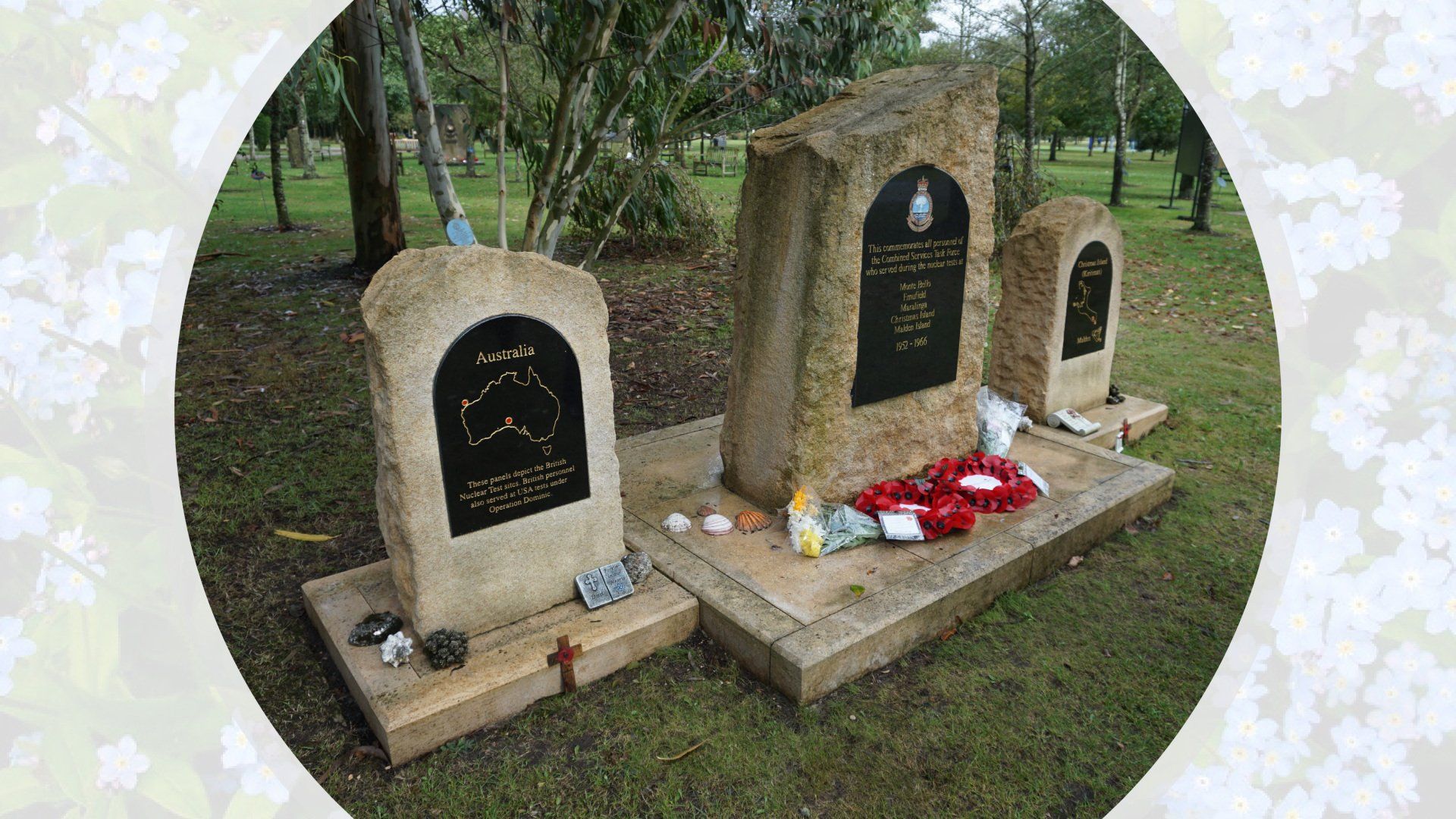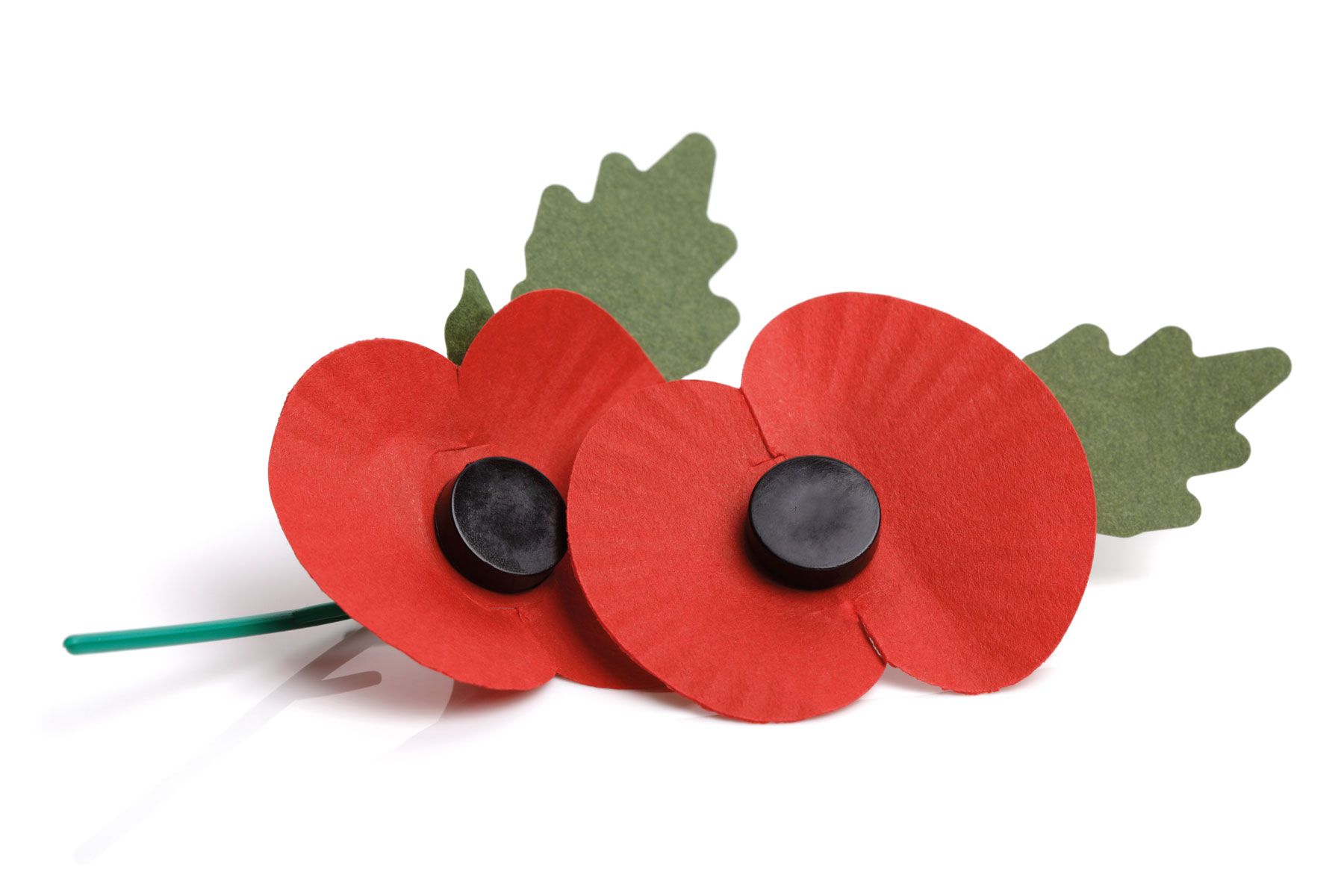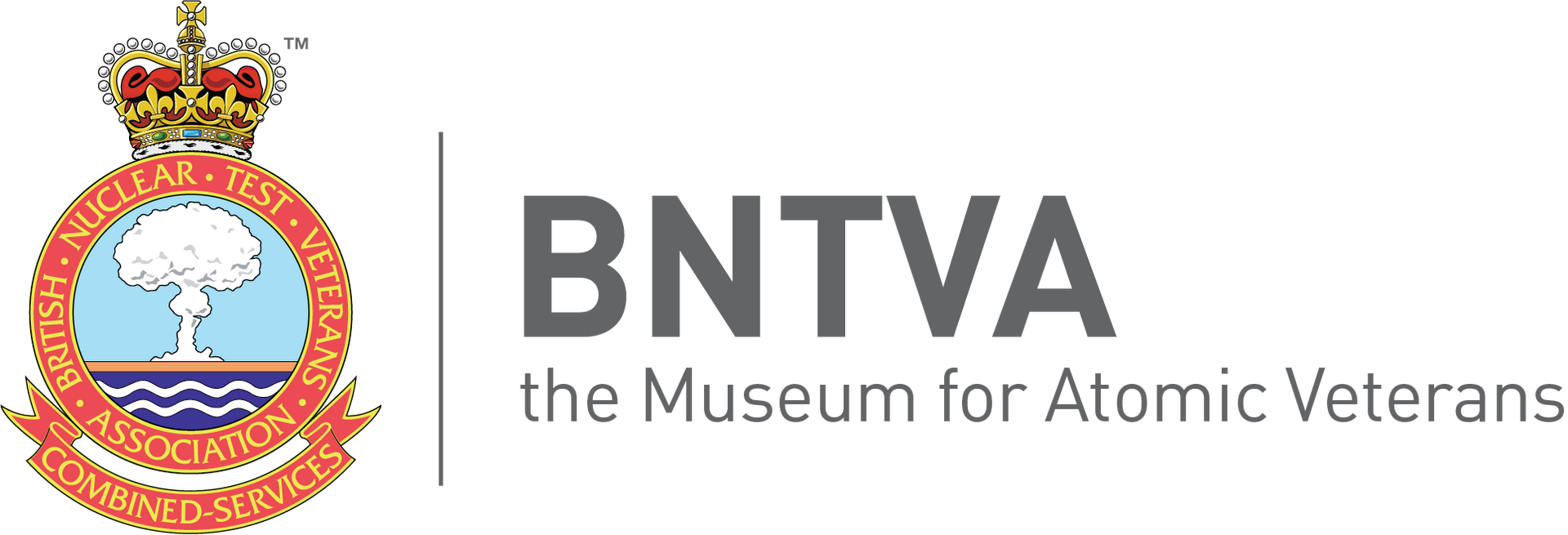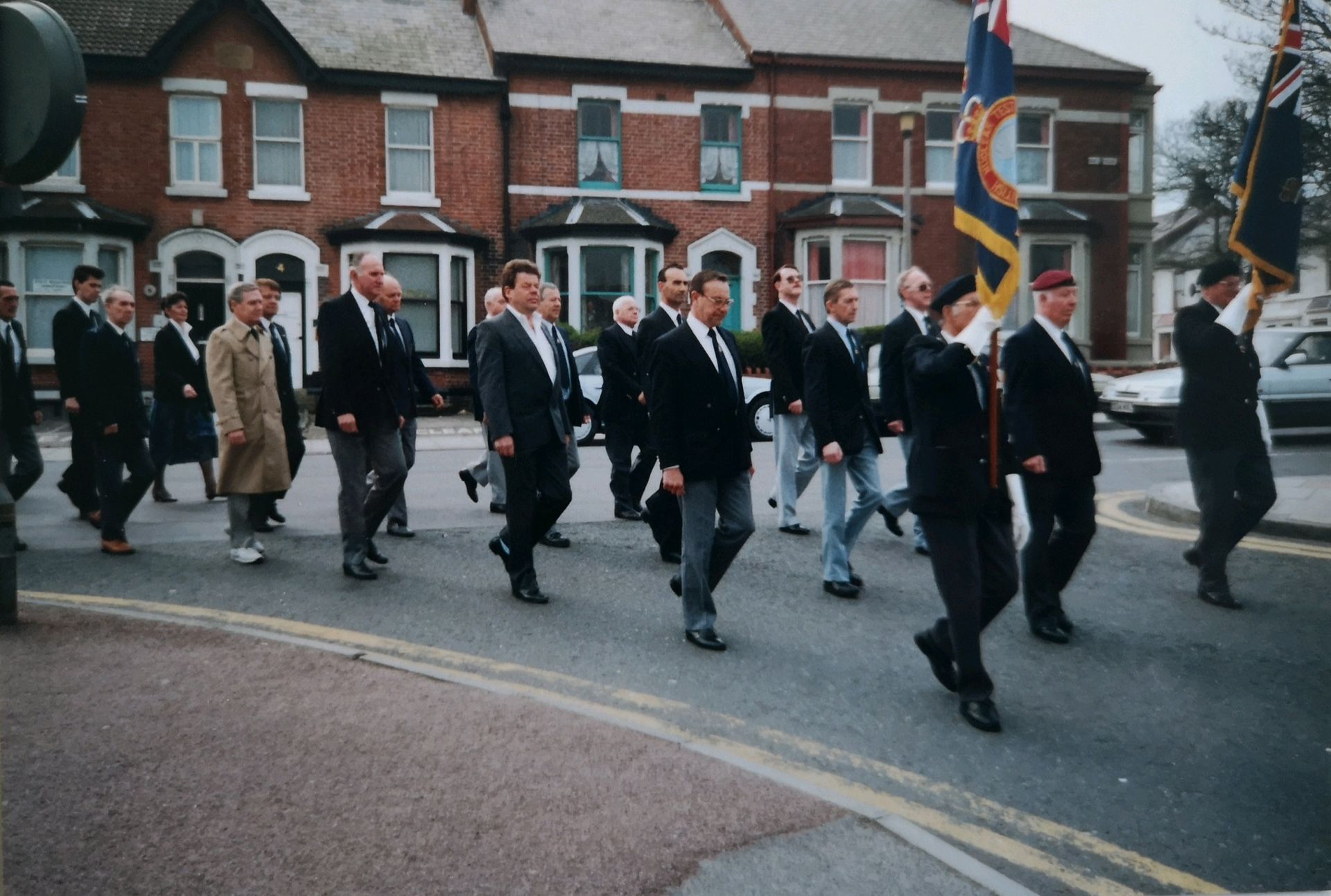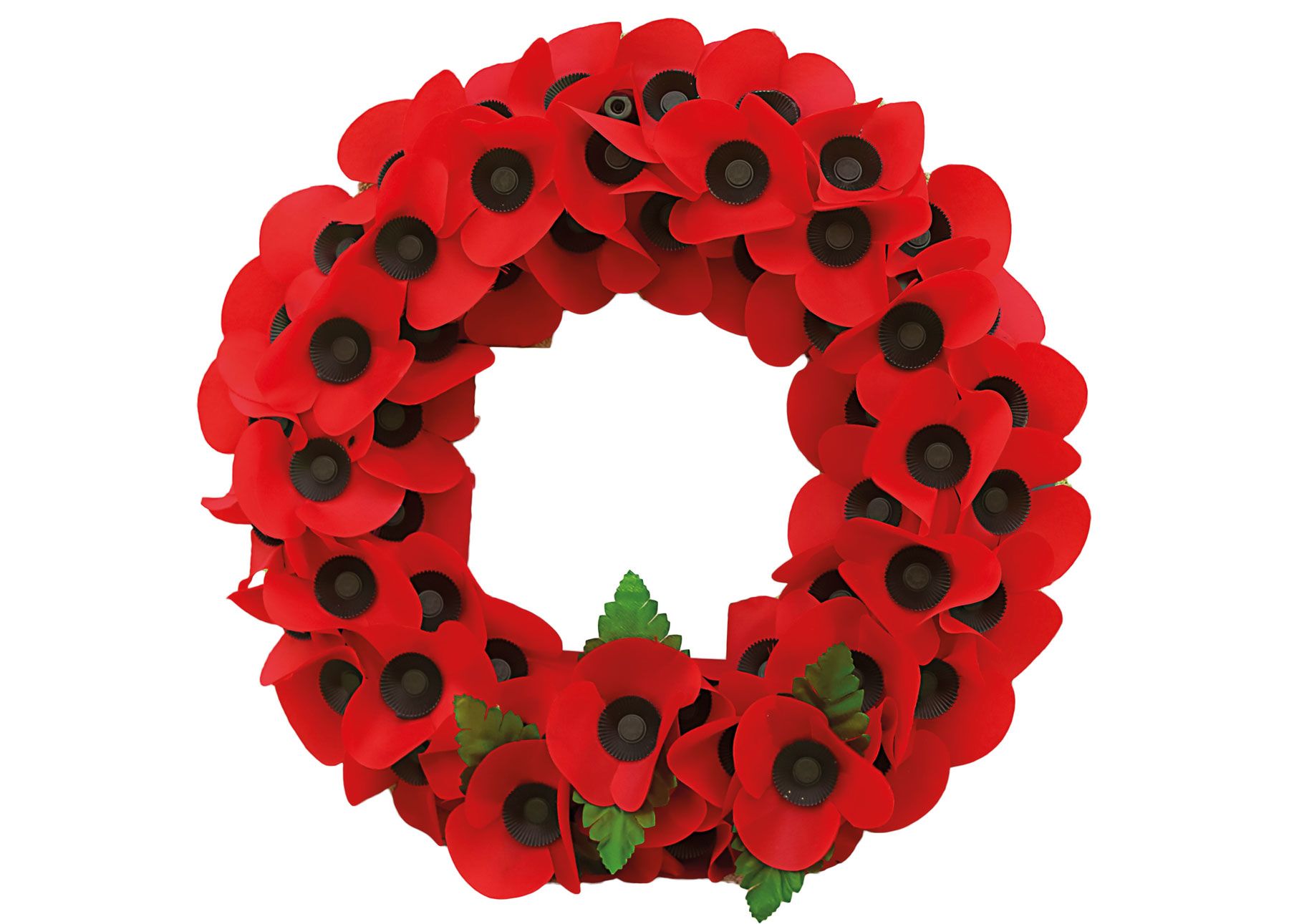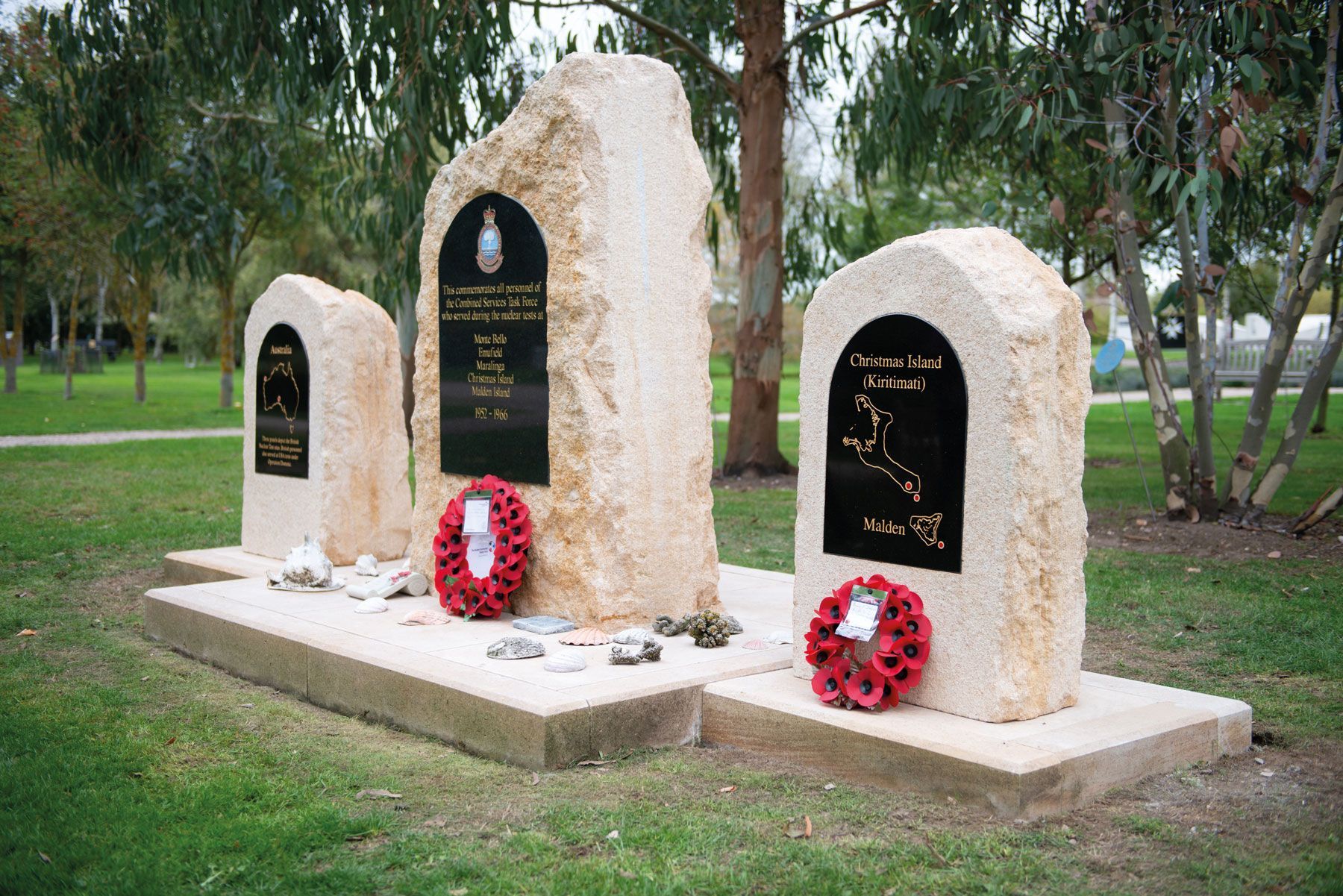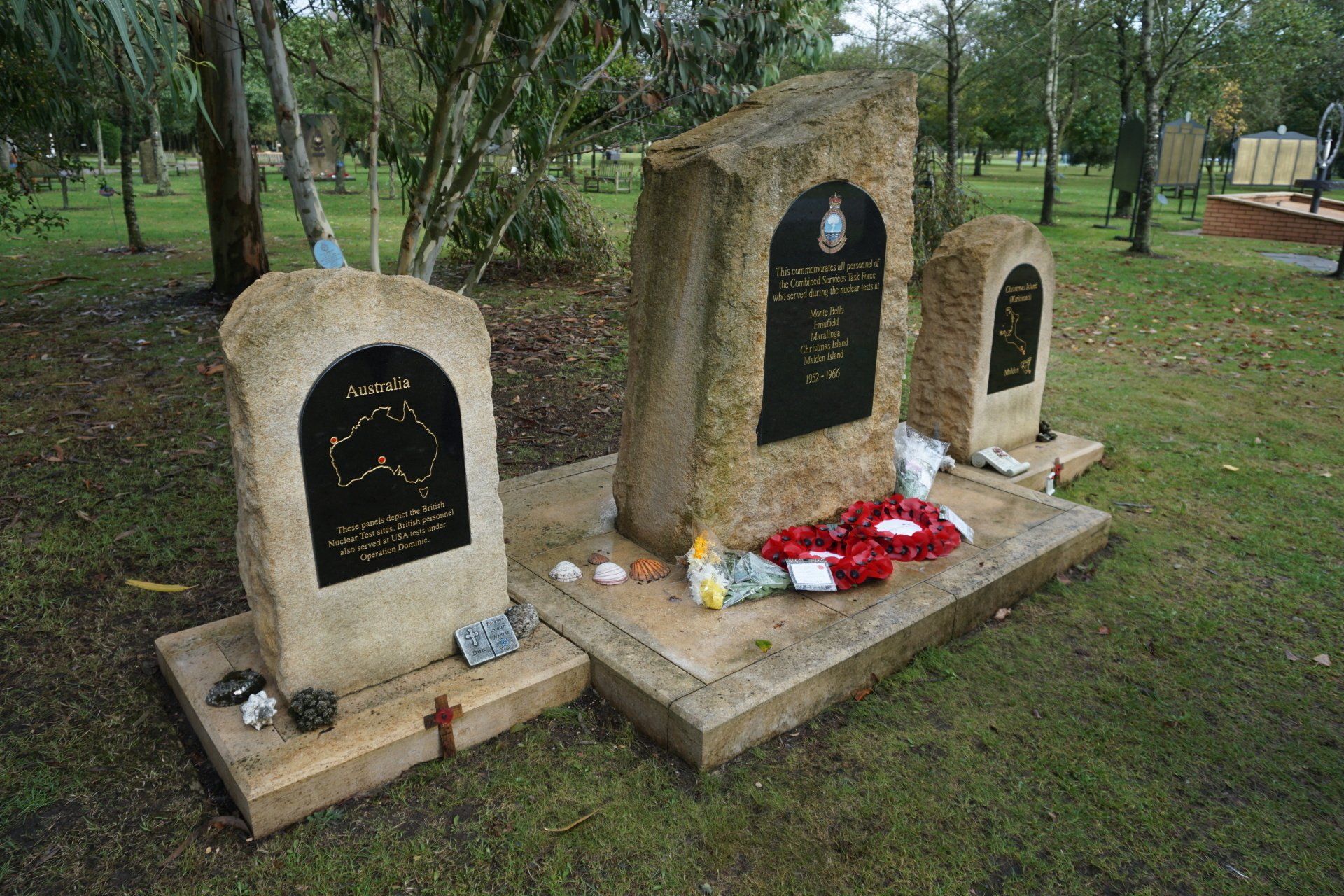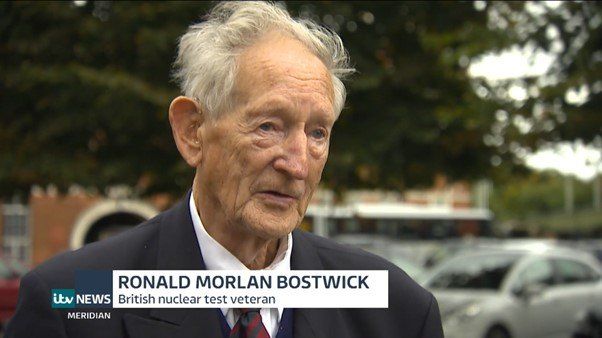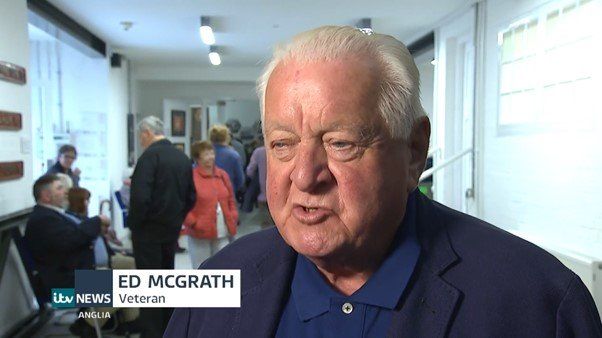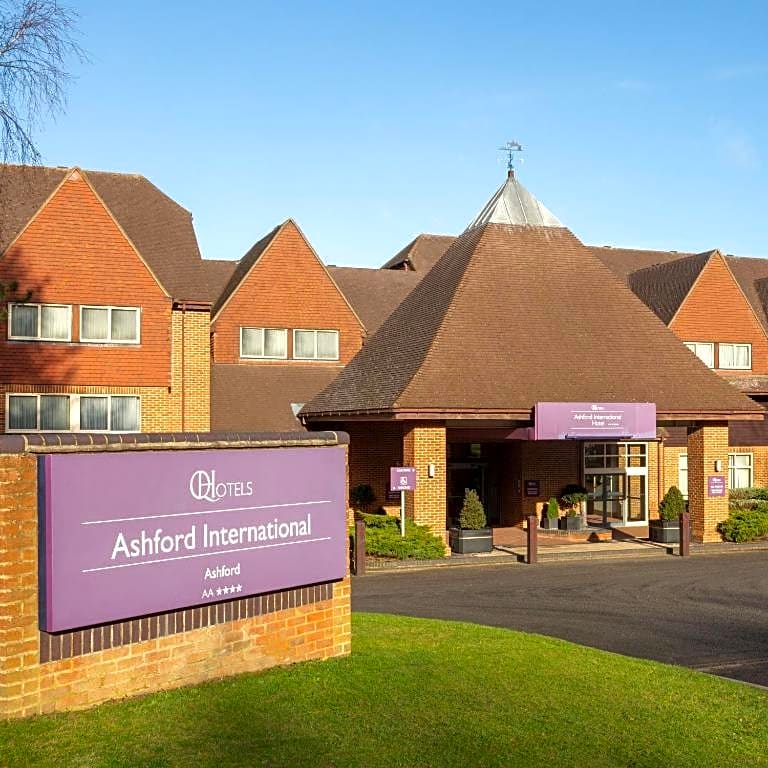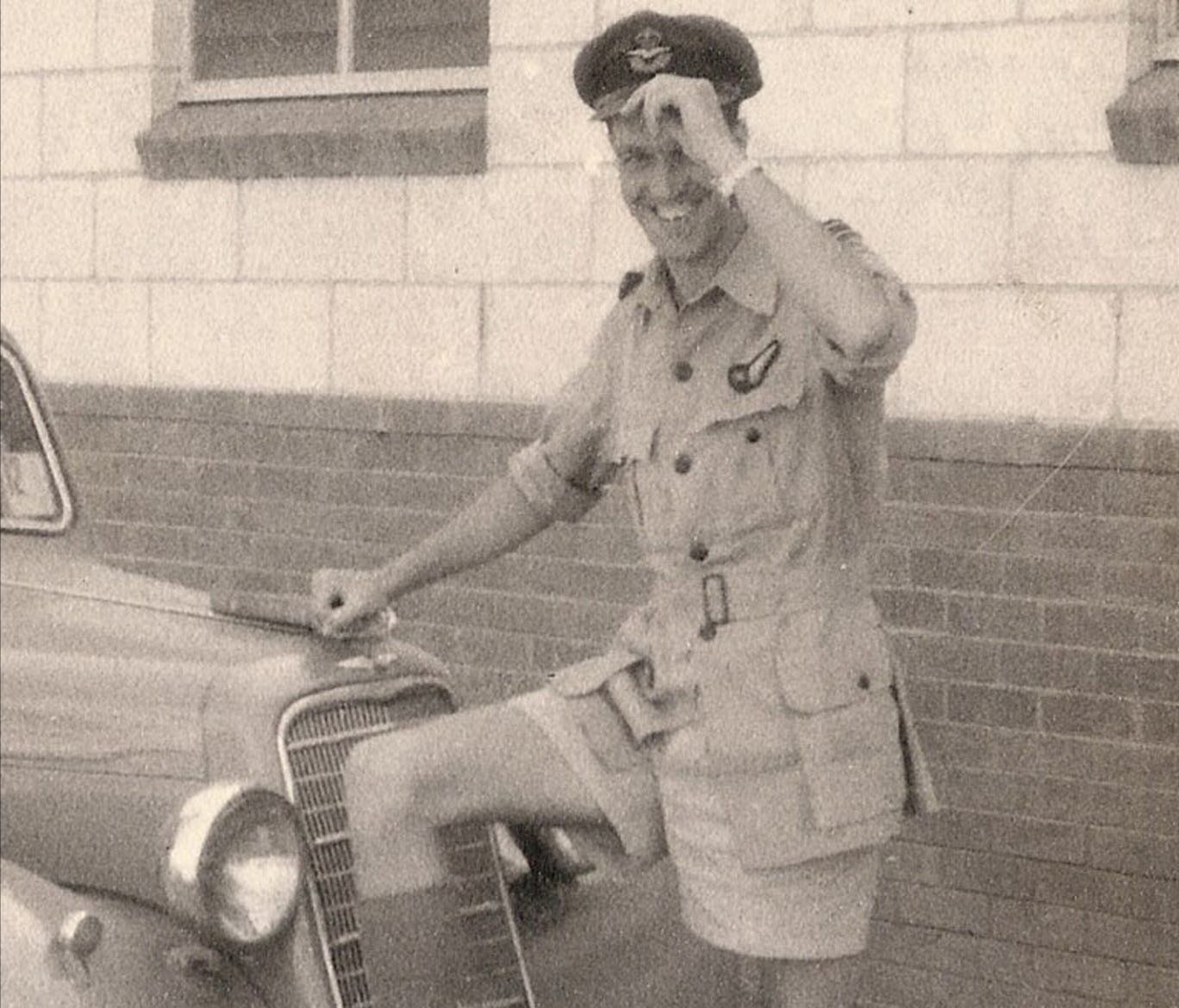What exactly did the Commonwealth countries test at the atomic trials in Australia?
The following presentation was written by Ceri McDade and Wesley Perriman, and delivered by Wesley, BNTVA Curator, at the 'Rose Garden Conference', 23 October 2021.
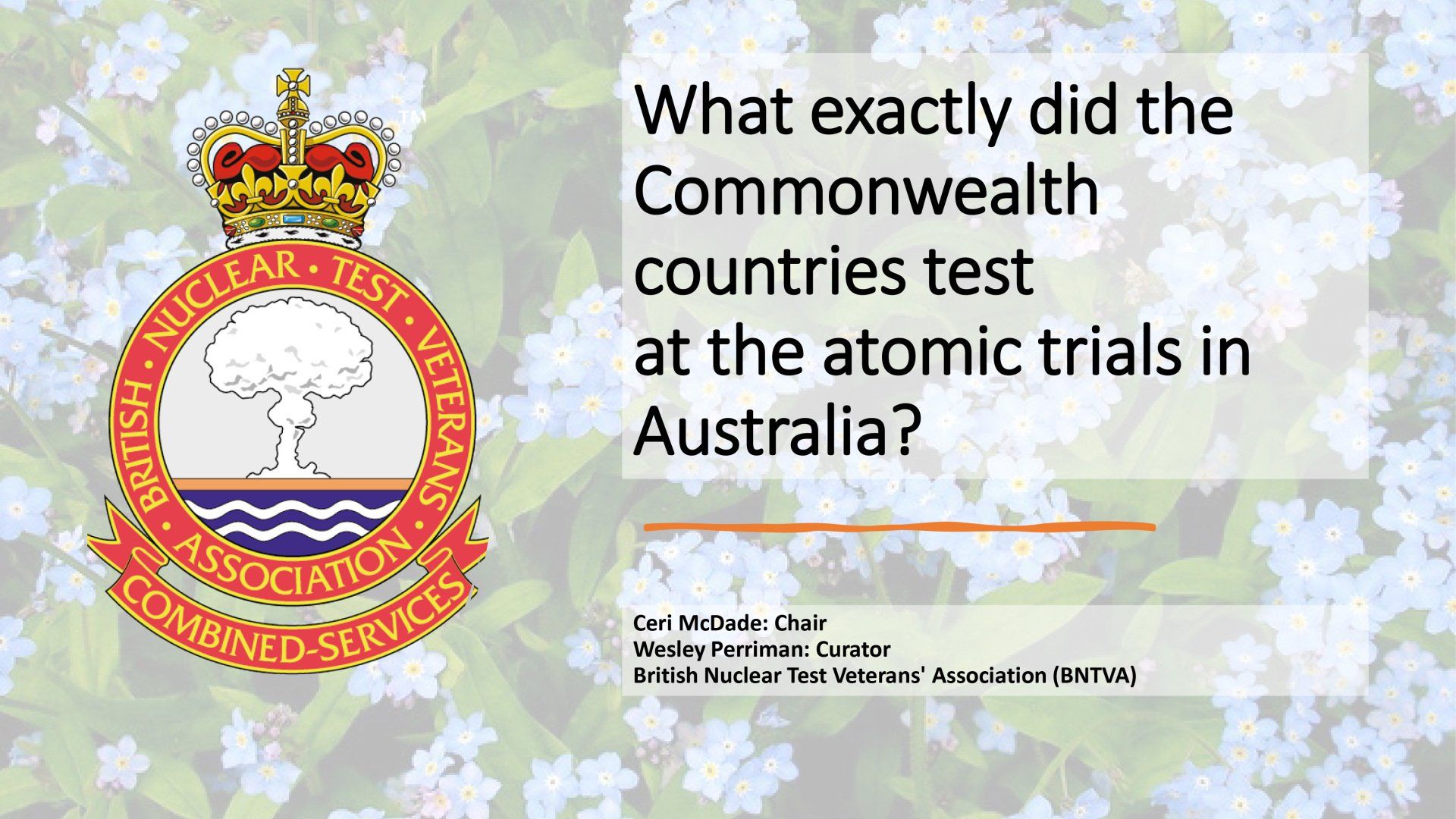
Introduction & Context
British service personnel, government scientists and civilians participated in nuclear tests and associated radiation clean-ups between 1952-1967. These operations involved at least 21,357 British service personnel from the Royal Air Force, Army, Royal Navy, Royal Fleet Auxiliary, Atomic Weapons Research Establishment (AWRE) and the UK Atomic Energy Authority (Public Health England 2021).
The tests and clean-ups took place at the Montebello Islands, Maralinga and Emu Field, Australia, Christmas and Malden Islands. On 31 December 2017, 7,301 of these British nuclear test participants were alive and living in the UK (Public Health England 2021). We believe this figure to be around 4-5,000 at the current time.
The British Nuclear Test Veterans’ Association (BNTVA) was formed in 1983 by British nuclear test veterans and exists as the UK charity to provide welfare and wellbeing support for nuclear test veterans and their families, promote and conduct research into the health effects of ionizing radiation, and preserve the legacy of the nuclear tests. The Trustees are often informed of British nuclear test participants passing away, and regularly loan the BNTVA coffin drapes for veterans’ funerals at the request of their families.
The Commonwealth nuclear testing was led by the UK government, involving thousands of serving personnel from the Combined Services, AWRE scientists, Canadian, New Zealand, Fijian and Australian service personnel and civilians. In military terms, the adversary was the Soviet Union, yet the fighting was not arm-to-arm combat. The race was on to develop the nuclear deterrent and prepare for a new and mighty once-and-for-all psychological, dramatic and global method of warfare which had been introduced at Hiroshima as a result of the Manhattan Project.
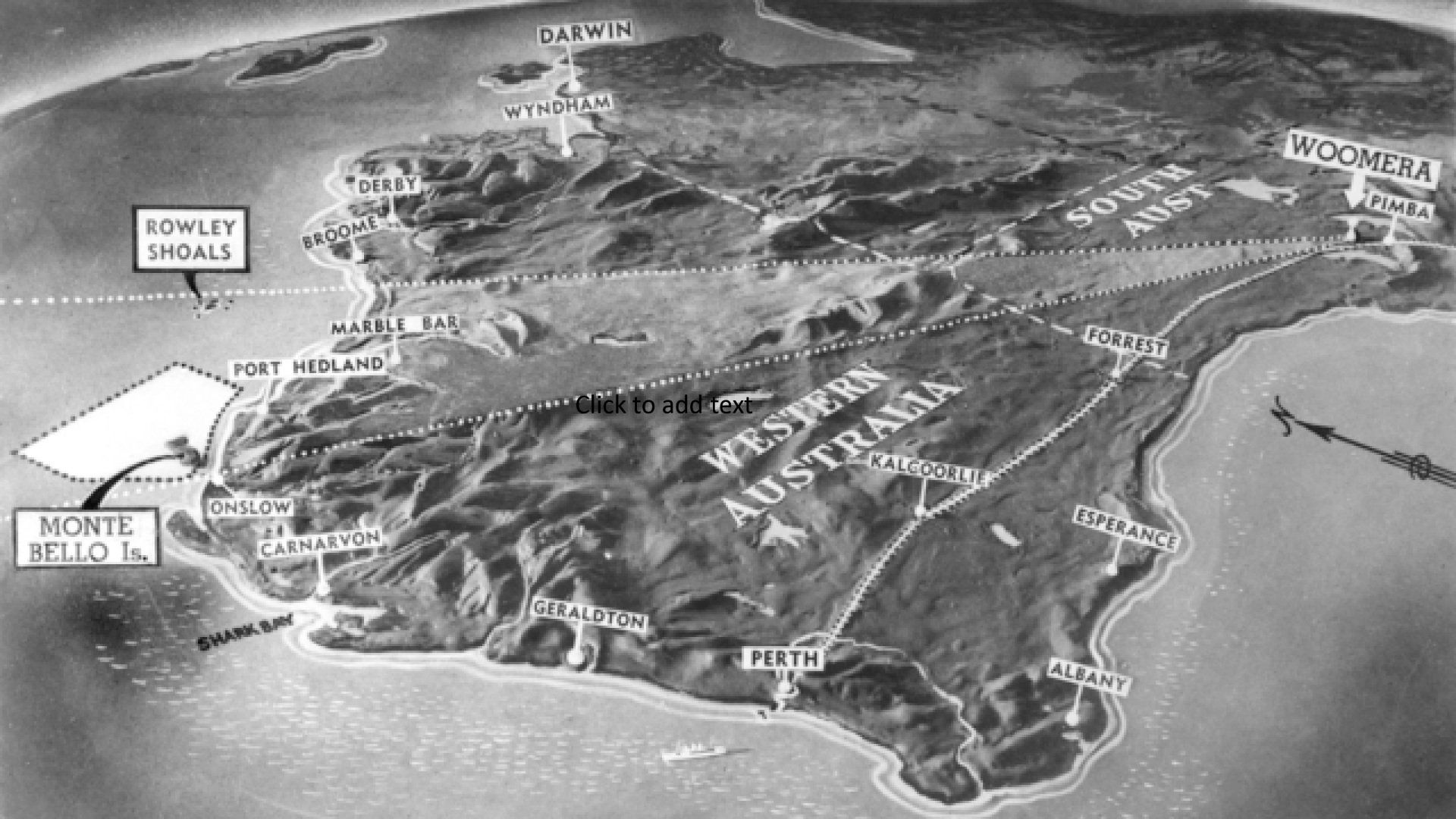
Britain’s first atomic bomb was based on the Nagasaki “fat man” bomb and would be ready for testing in 1952 as part of Operation Hurricane. It was decided that a shipborne bomb would be of interest to the Americans but a request to use the US proving grounds was turned down, so other sites were considered including seven in Canada. The decision was made to use the remote Montebello islands off North-western Australia; a survey team was sent in late 1950.
On the 3 October 1952 Britain detonated its first atomic Bomb inside HMS Plym, thus becoming the third country to possess the A-Bomb. This was shortly eclipsed by the American detonation of Ivy Mike which was the first full-scale test of a thermonuclear device, on 1 November 1952. It would be another 4 ½ years before Britain would test a thermonuclear device at Operation Grapple; this shows the speed at which the British were working in the race for the nuclear deterrent.
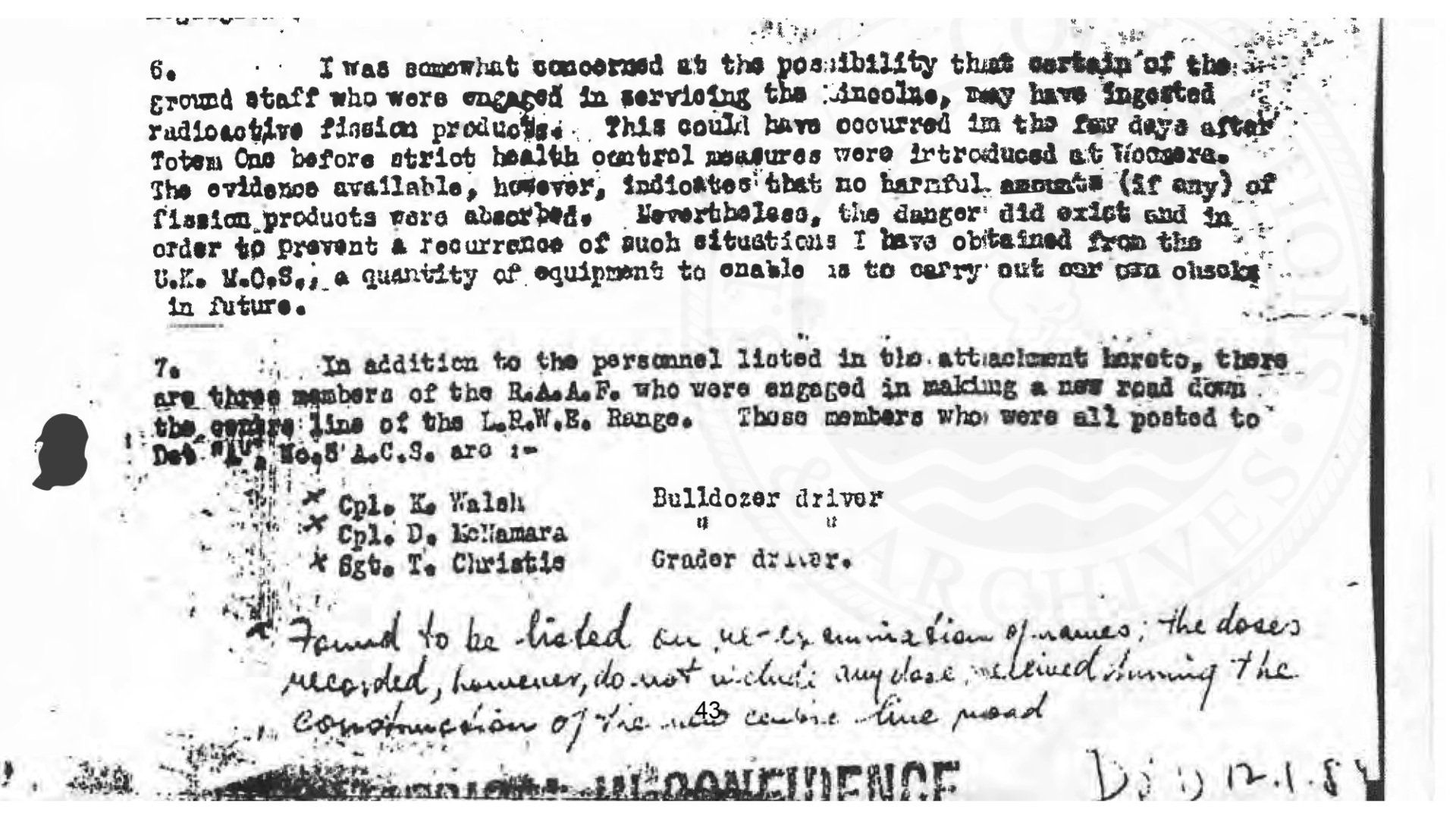
Operation Totem
This document reveals that ground staff who serviced the Lincoln bombers
“may have ingested radioactive fission products. This could have occurred in the few days after Totem One before strict health control measures were introduced at Woomera... Nevertheless, the danger did exist.”
Personnel took risks to personal safety by participating in operations
before
strict health and safety measures were introduced. The question asked is why were strict health and safety measures not in operation before Operation Totem One? Totem One was preceded by three British extremely risky “Kitten” tests, which used polonium-210, beryllium and natural uranium to test neutron initiators. Totem One was a scheduled detonation of 3 kilotons of TNT, which Penney then estimated to be around 10 kilotons of TNT after detonation. For the personnel involved the lack of strict health and safety measures would have contributed to the risk and rigour that they experienced.
The British introduced cloud flying and sampling from the time of Operation Totem. Geoffrey Dhenin and his crew received greater amounts of radiation than anticipated. Cloud flying continued throughout the Commonwealth testing, and involved the Australian military in addition to the British. The filter papers used to collect samples left a lot to be desired, and it remained a risky business throughout the tests. John Robinson, who flew Canberra's, was told to take out specific insurance before he arrived in Australia.
HMS Diana
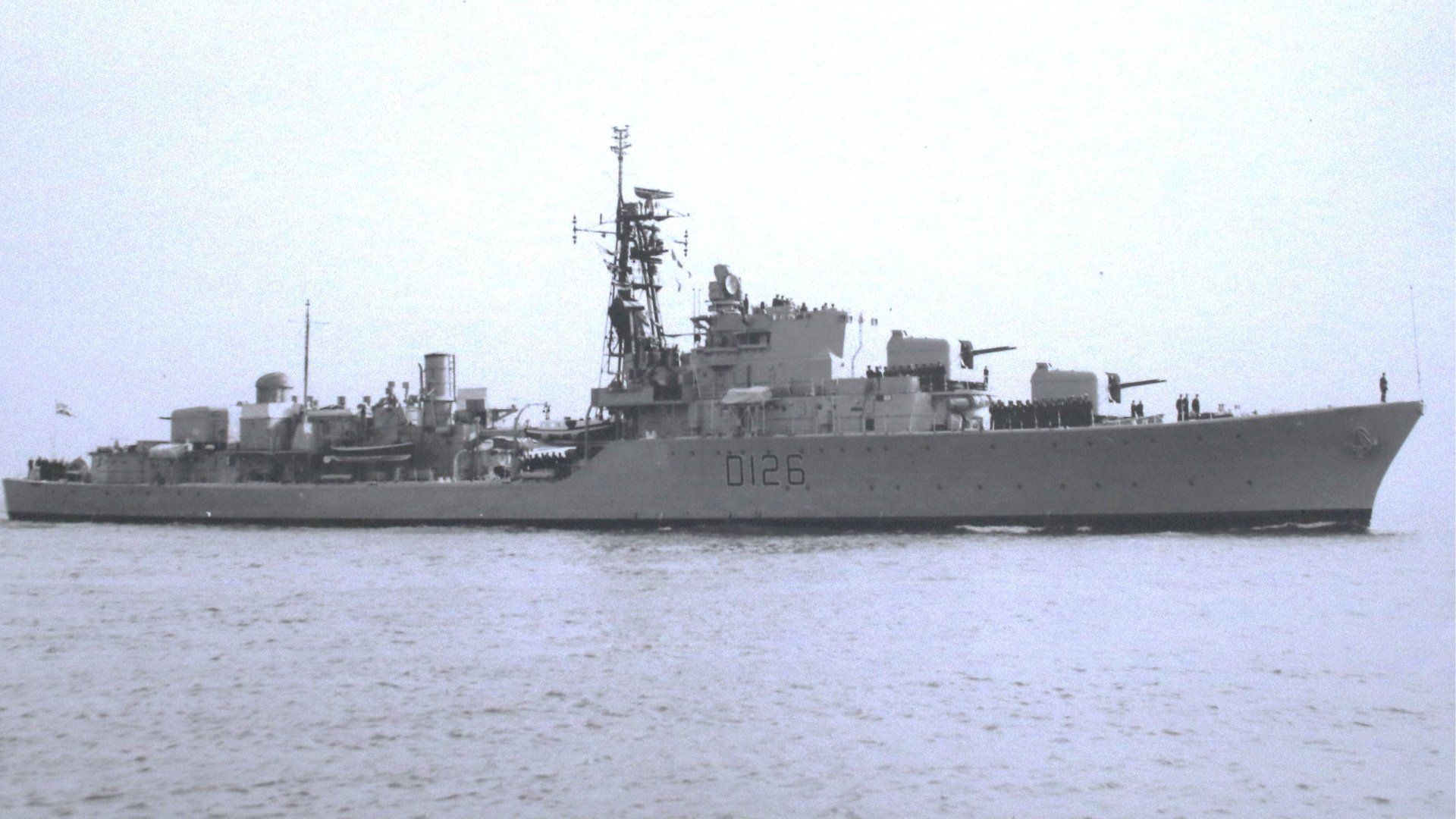
The HMS Diana, a daring class destroyer, was tasked with sailing through the radiation plumes at Operation Mosaic G1 and G2 bombs. Many of the crew were teenage National Servicemen who were volunteered for the task. They had no option to decline the task ahead, and were shut down below deck in their normal clothing. They experienced fatigue, faintness, headaches, respiratory distress, abdominal pain and claustrophobia.
Captain John Gower felt abandoned and betrayed by the British government at the prospect of carrying out these orders; even the scientists would not come aboard the ship as they said this was outside their terms of reference.
Captain Gower stated, “The purpose of all our tests at that time was to show Washington (and Moscow) that we were a full member of the nuclear club. Time was running out before a worldwide ban was imposed and Britain wanted the Hydrogen bomb. Perfection of an operational trigger device was a matter of great urgency and this task had to be completed at Monte Bello in 1956 to ensure satisfactory detonation of the H-bomb at Christmas Island in 1957. Mosaic 1 and 2 were organised with great urgency...Unknown to me at the time, since 1953 the Chiefs of Staff had wanted to know what effect an atomic explosion would have on ships, their contents, equipment and men. How much radioactivity could a ship stand?”
G2 was heard 200 miles away on mainland Australia. It was at this point, when the radioactive plume drifted over Australia that Menzies phoned Eden and said, "What the bloody hell is going on? The cloud is drifting over the mainland".
Indoctrinee Force
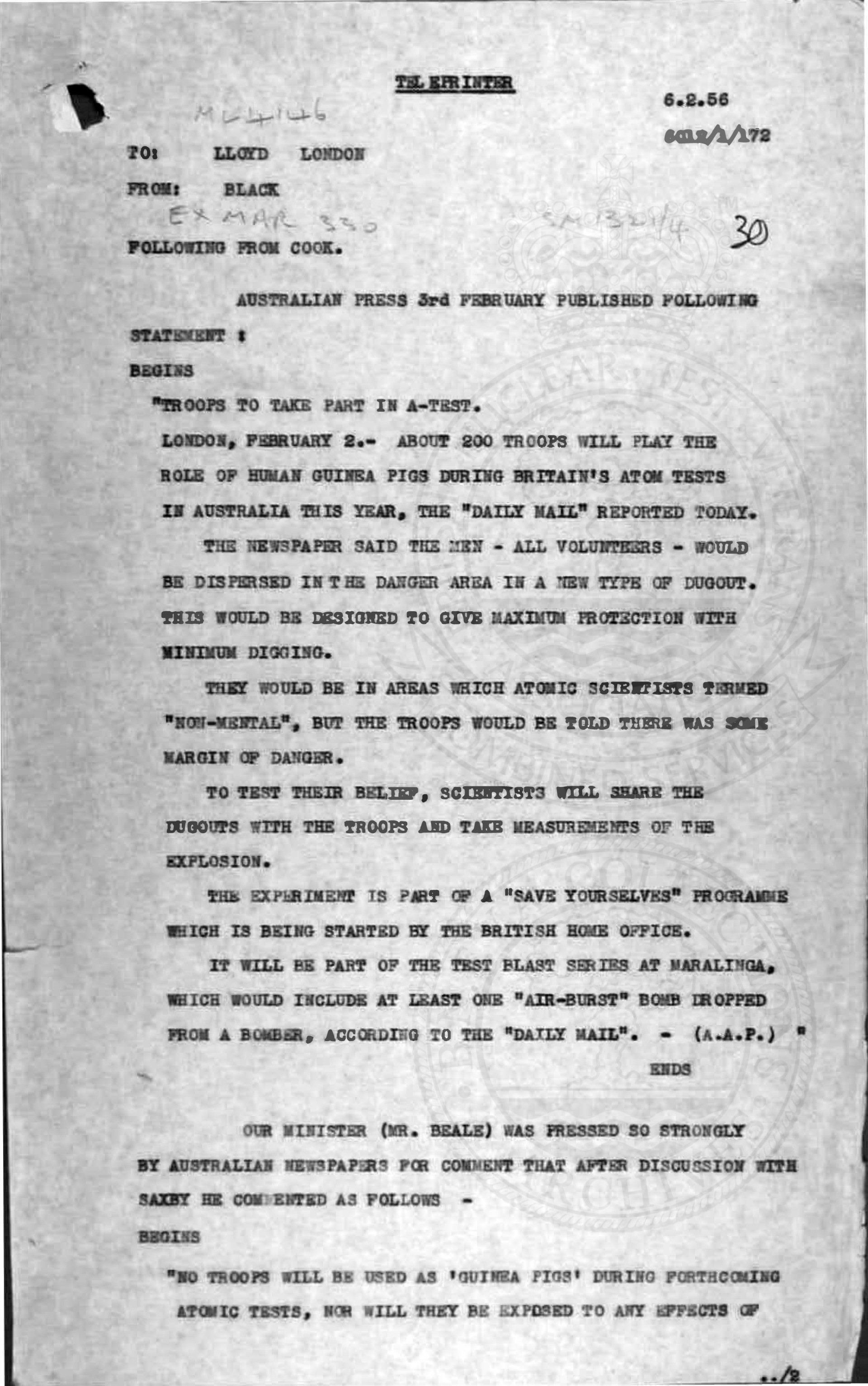
As in the US tests, the UK were keen to test the endurance, immediate response and fighting capabilities of the test "observers". There were reports in the Australian press before Operation Buffalo of plans to use "human guinea pigs" in the forward area "as part of a 'Save Yourselves' programme". This was denied heavily yet the key factor was to experiment with how the men would fight in a conventional way in atomic warfare conditions with them experiencing flash, heat and blast effects of the radioactive bombs.
The Canadian Radiation Detection Unit (1RDU) comprised of 24 men who had already cleaned up the Chalk River nuclear reactor disaster, and been present at Apple II, Nevada in 1955. The belief was that they would build immunity to radiation through higher exposure than other men. The Health Physics Advisor gave signed off prescriptions of radiation from 10 roentgens to 25 roentgens. A dose of 25 roentgens, even over an accumulated dose, is the point where clinically observable blood changes occur in the human body.
E Drake-Seager led the Indoctrinee Force of a few hundred men. However, the Canadian Radiation Detection Unit (1RDU) were given a "special" function of being situated 3,200 yards (1.82 miles) from the detonation at Marcoo to experience the ground shock, leave their dug outs and move forward on their stomachs in shorts and long socks.
(Appendix 2 of AB & ORS v Ministry of Defence (AB & Ors v Ministry of Defence [2009] EWHC 1225 (QB) (05 June 2009) (bailii.org) states,
"Operation BUFFALO
Operation BUFFALO 1 was carried out on 27 September 1956 at One Tree on the Maralinga Range. This tested the 'Red Beard' warhead using a 15 kiloton, 31-metre tower-mounted detonation.
The Indoctrinee Force (see paragraphs 39-44 below) was present at this detonation. Air sampling was carried out by Varsity aircraft and Whirlwind helicopters. On 4 October 1956 Operation BUFFALO 2 took place at Marcoo on the Maralinga Range. This tested the 'Blue Danube' 4 kiloton warhead with a low yield (1.5 kilotons) Mark 1 enriched Uranium core. The device was placed in a shallow pit and exploded. The Indoctrinee Force was present at this detonation. Operation BUFFALO 3 took place on 11 October and was an airburst bomb dropped by the RAF over the Kite range at Maralinga. It exploded at about 500 feet above ground. The yield was approximately 3 kilotons. Operation BUFFALO 4 was a tower burst detonated at the Breakaway site on the Maralinga Range. The yield was approximately 10 kilotons. The Ministry of Defence says that Operation BUFFALO was designed primarily to advance research and development AND to carry out "proof tests" of atomic weapons. The first two tests were required to test prototype service warheads. The third test was fired partly to obtain scientific data AND partly to obtain data on weapon effects. It also provided the RAF with the opportunity to drop a nuclear bomb. The fourth test was the test of a service weapon.")
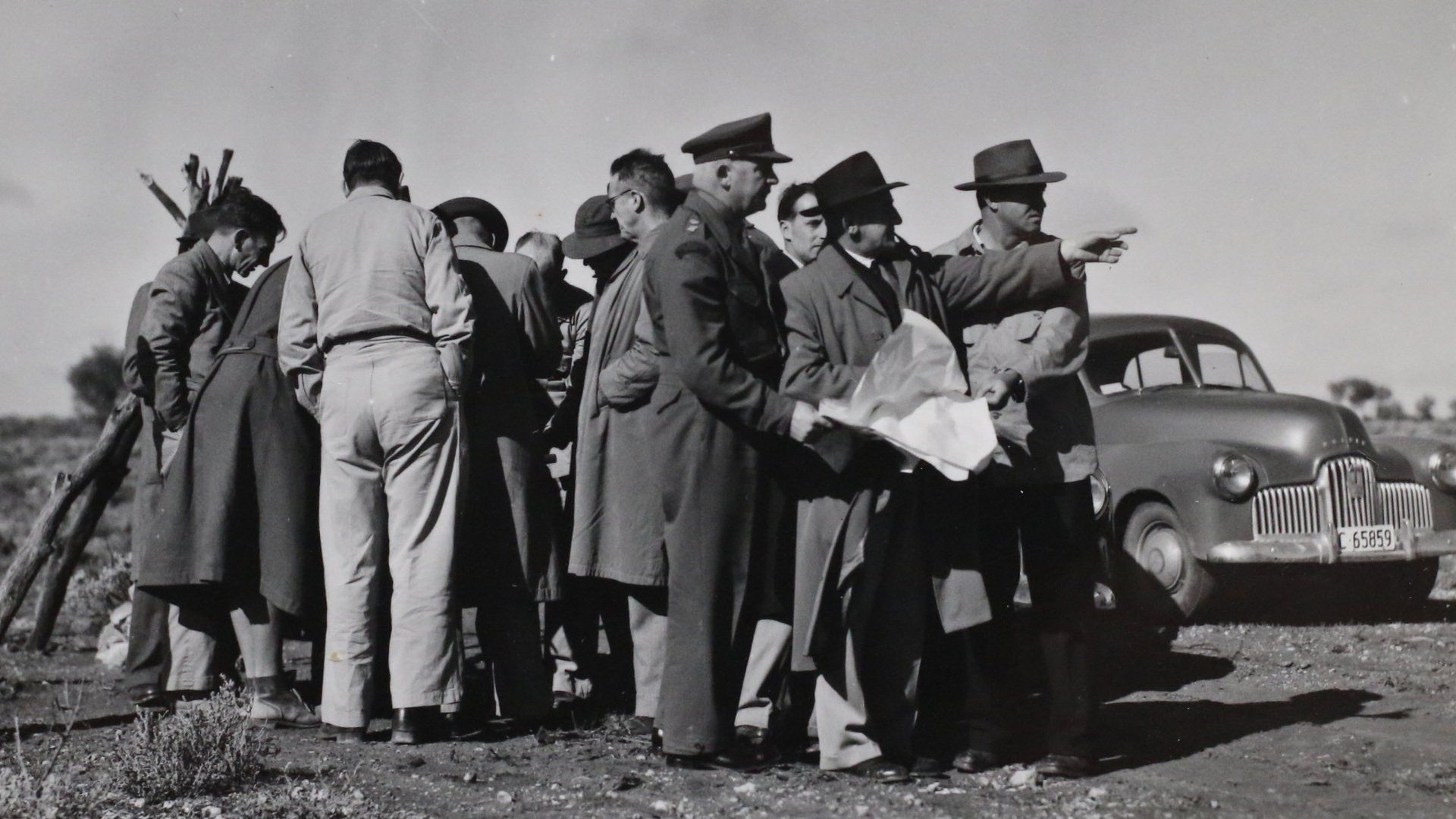
Testing Civilians and the Australian Environment
Not only did the scientists test the personnel and equipment involved at the test sites, but they tested the Australian terrain and population too, as fallout drifted around the land.
Frank Walker, in his book "Maralinga", describes that the British chose to turn "the whole of Australia into one giant nuclear laboratory. They wanted to use the Australian population as human guinea pigs for decades to come".
Ernest Titterton of the Atomic Safety Committee achieved this by:
•Collecting soil samples from pasture regions around Perth, Sydney, Brisbane, Melbourne and Adelaide.
•Testing vegetation on a regular basis.
•Removal of sheep thyroids for testing
•Testing the dairy cows' milk twice a year for strontium-90, as it is absorbed into bone easily and is a significant marker for radioactive fallout.
•Testing femur bones from stillborn and young children to send to the US and UK for analysis.
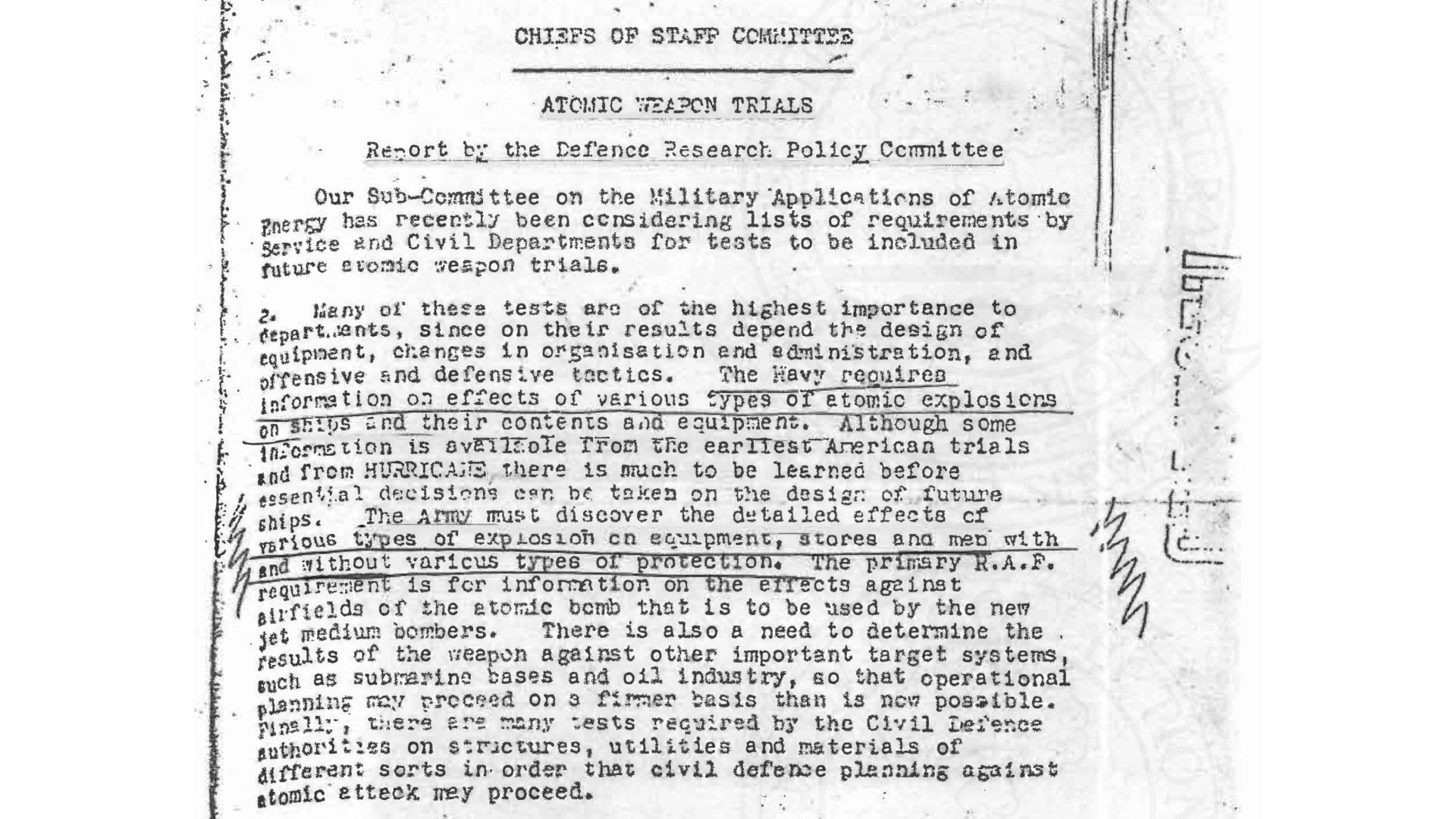
Operation Mosaic and Operation Buffalo
A report by the Defence Research Policy committee states that,
“The Navy requires information on effects of various types of atomic explosions on ships and their contents and equipment.... The Army must discover the detailed effects of various types of explosion on equipment, stores and men with and without various types of protection”.
Serving personnel were ordered to take risks to obtain information of value to the military, including a number of personnel not being handed any form of protection to perform their duty at these unique and potentially dangerous tests. These men were open to the unnatural elements with no defence as a result of the atom bomb, effectively unarmed against invisible radiation, which is something unheard of within the military.
What is Moral Injury?
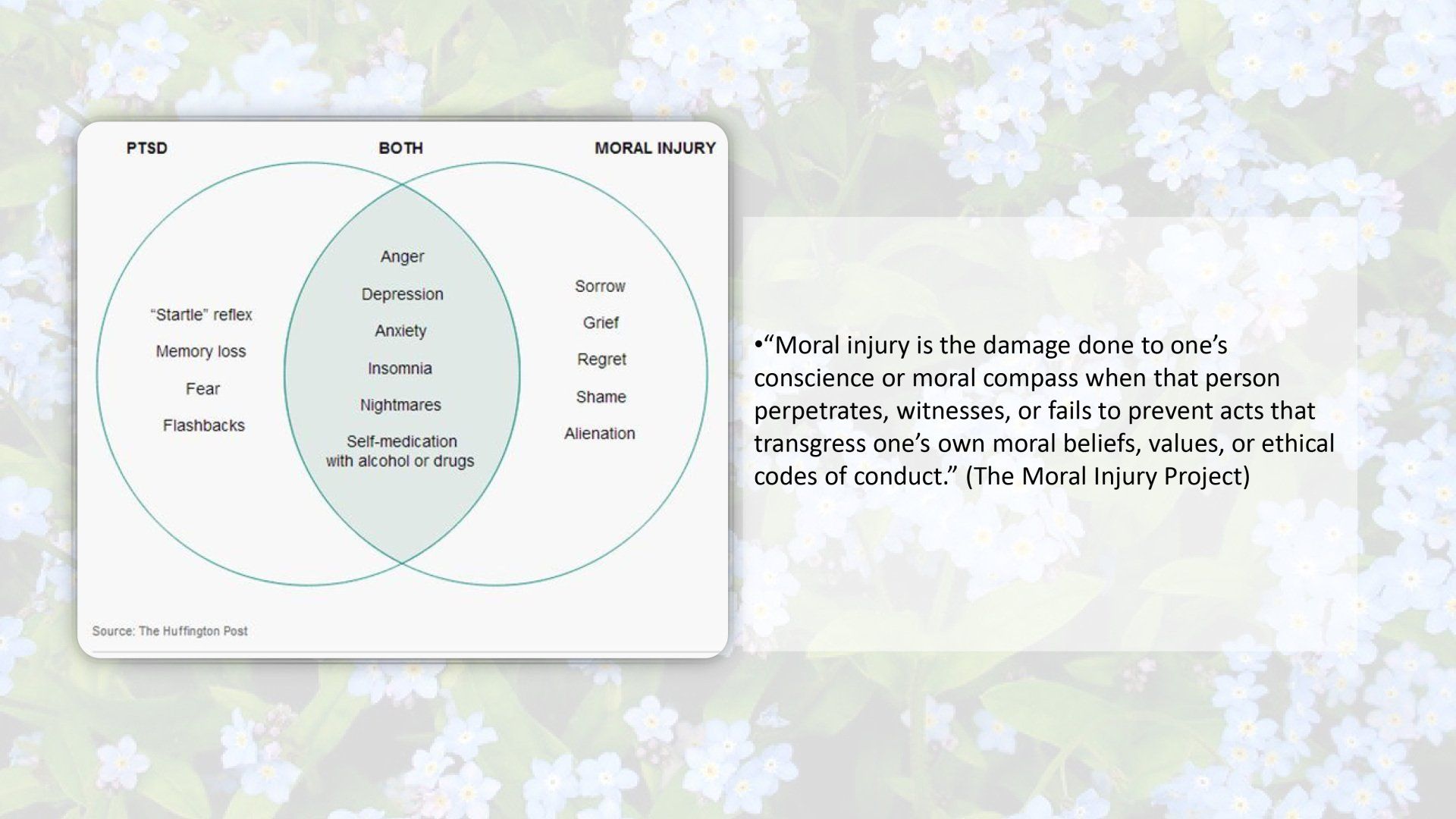
Moral Injury is used in frontline healthcare, particularly as a result of the lack of PPE at the beginning of the COVID-pandemic. It is also used in some military combat scenarios, however, the BNTVA believes that MI describes the experiences of the vast majority, if not all people who were involved in the Commonwealth testing – both military and civilians.
Keeping in mind that moral injury is not a formal diagnosis or a medical condition... There is no reason why a very close bond between someone who suffered a potentially morally injurious event could not lead to a [vicarious] MI in that the person close to them. MI changes a person's whole outlook, perception and thought process in life, attributed to the significant event of betrayal.
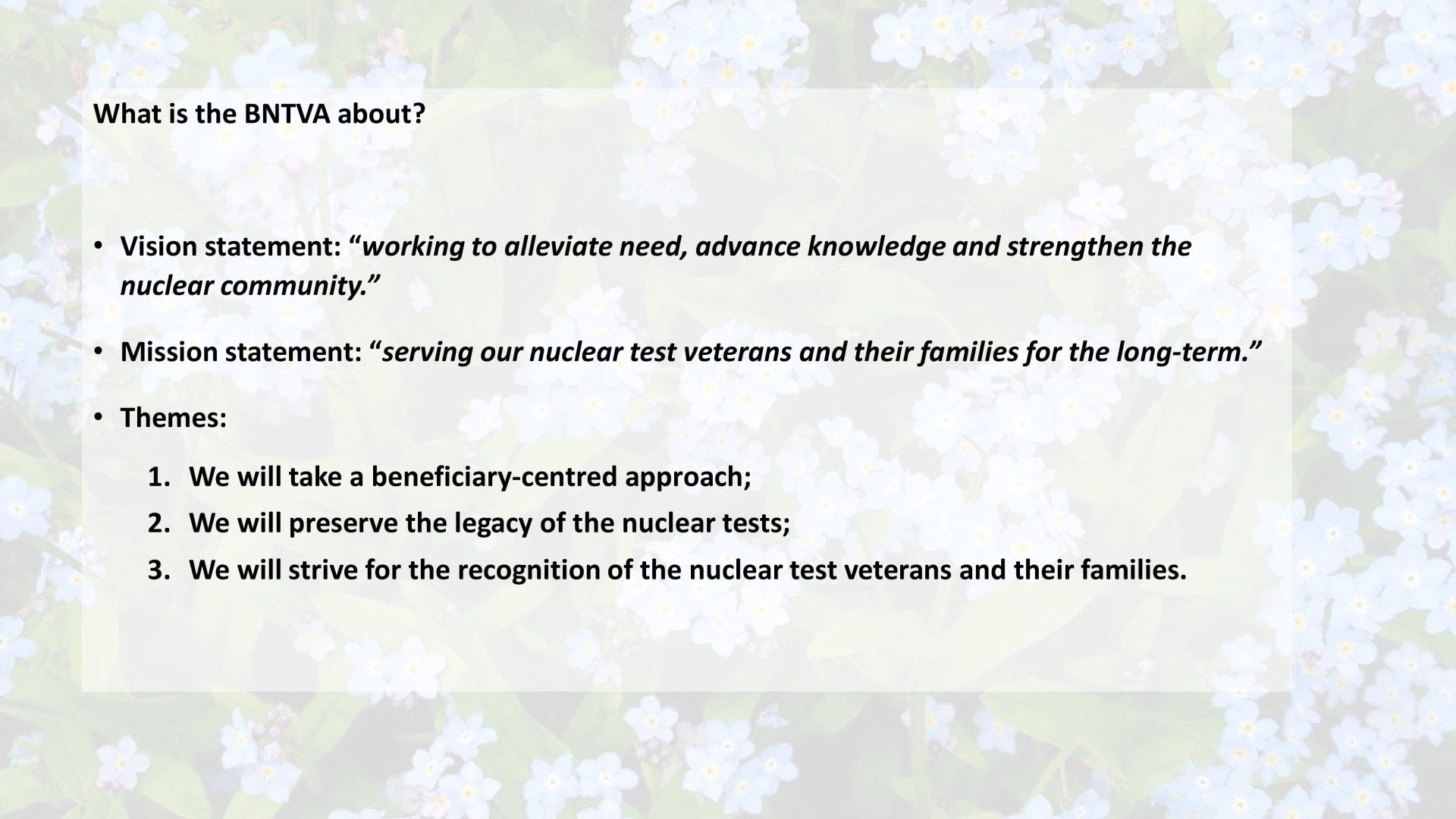
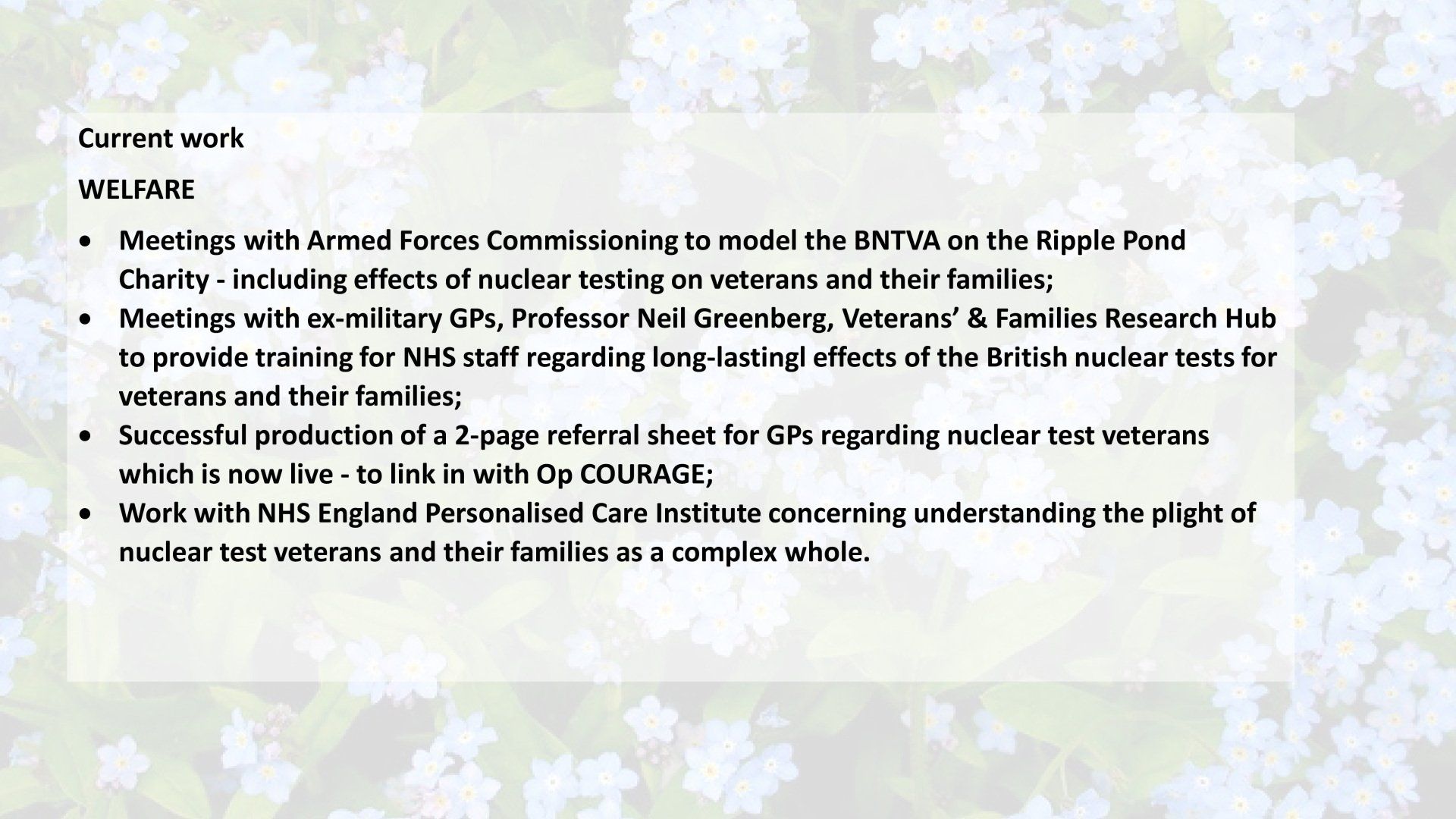
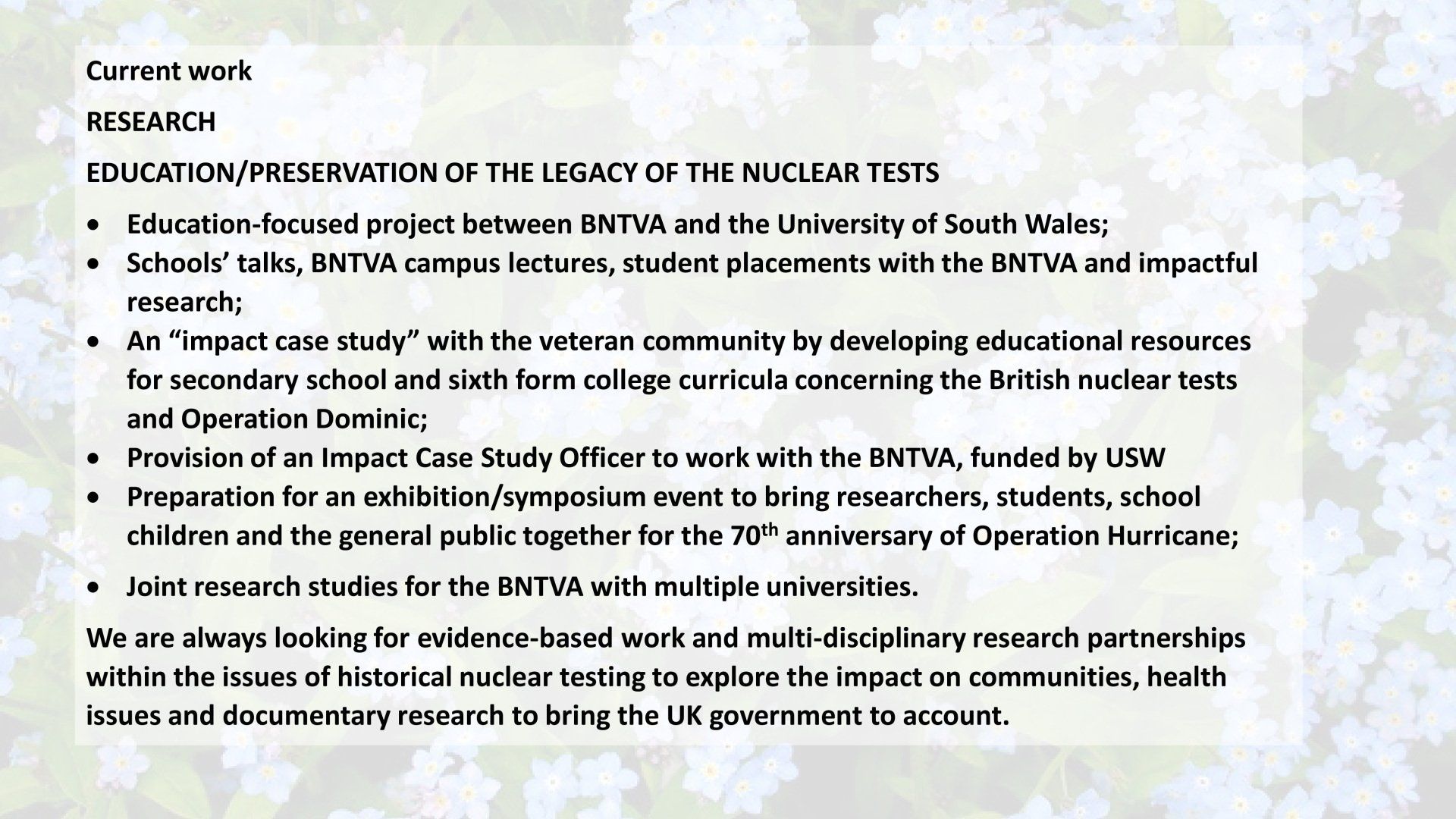
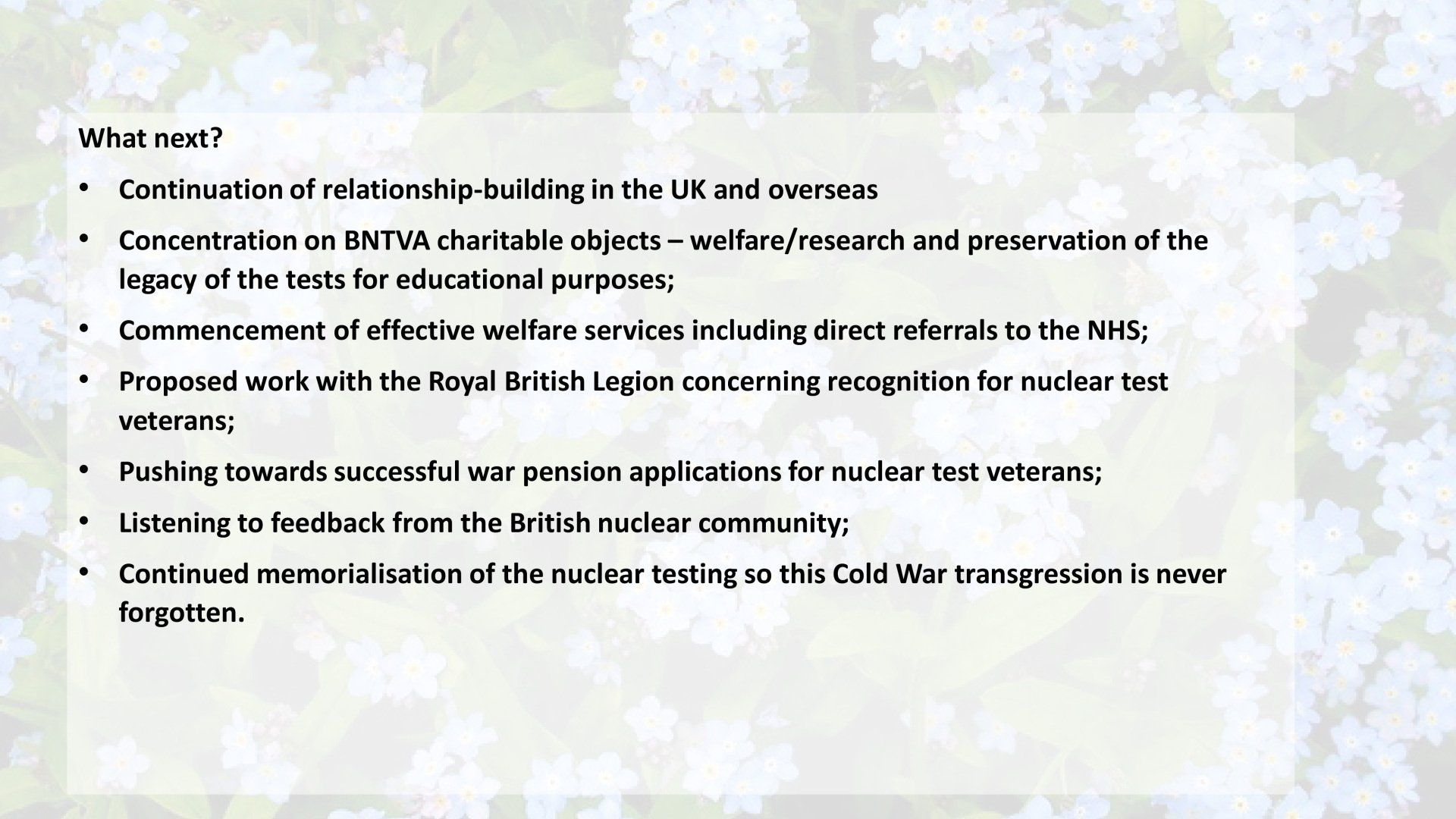
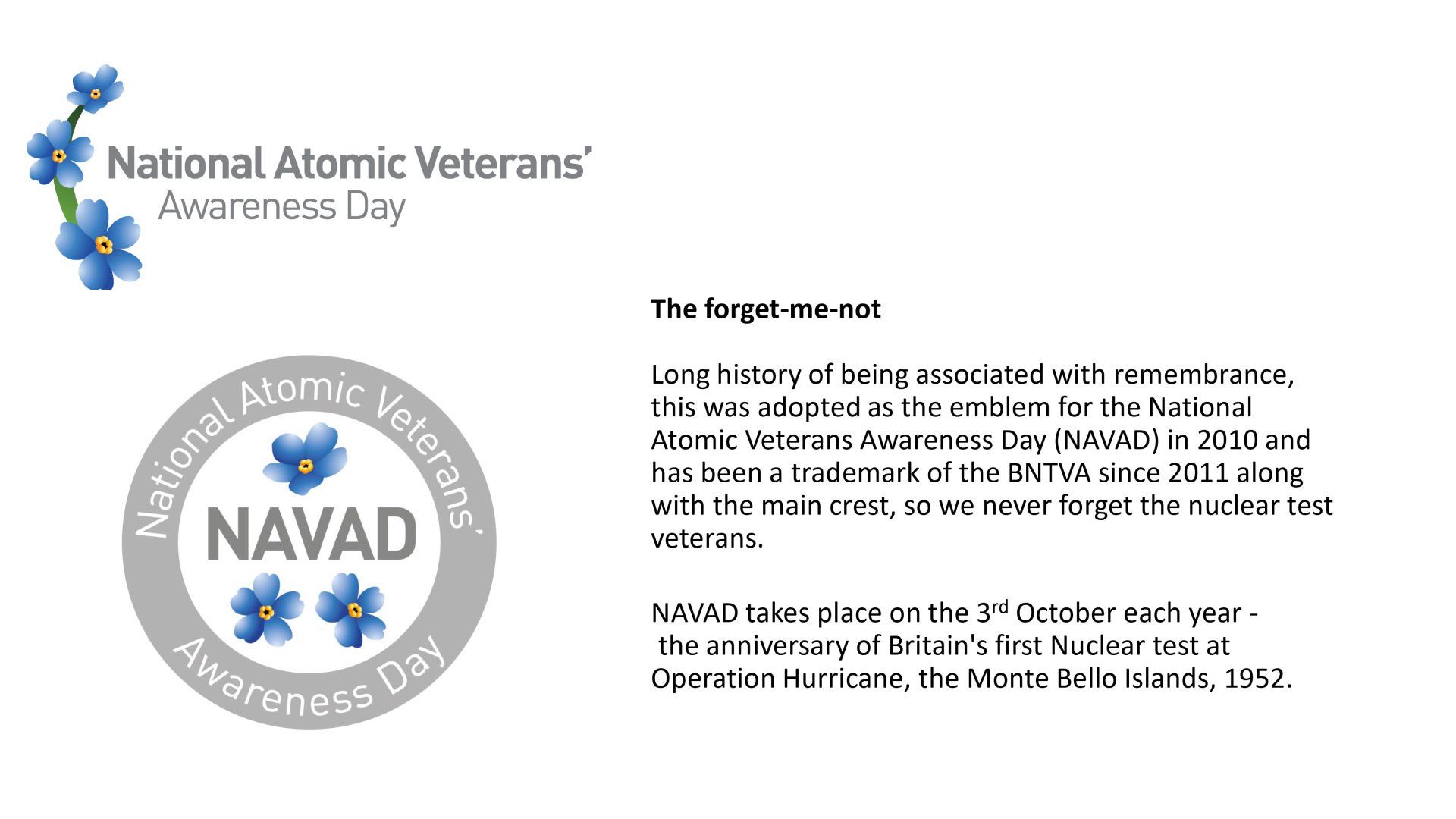
The forget-me-not
Long history of being associated with remembrance, this was adopted as the emblem for the National Atomic Veterans Awareness Day (NAVAD) in 2010, and has been a trademark of the BNTVA since 2011 along with the main crest, so we never forget the nuclear test veterans.
NAVAD occurs on the 3rd October anniversary of Britain's first Nuclear test at Operation Hurricane 1952.

